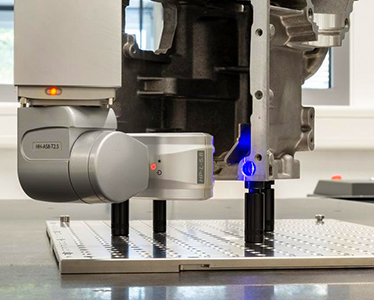What are the classifications of die forging?
2023-06-16
Maple machinery will carry out die forging to manufacture die forging parts, so it has accumulated rich forging experience in die forging. According to different equipment, die forging is divided into hammer die forging, crank press die forging, flat forging machine die forging, friction press die forging and so on. The equipment used for die forging on the hammer is a die forging hammer, usually an air die forging hammer. For forgings with complex shapes, they are initially formed in the blank die cavity and then forged in the forging die cavity.
Classified according to the structure of the forging die: the raw edge groove on the forging die to accommodate excess metal is called open die forging; On the contrary, there is no rough edge fly groove on the forging die to accommodate excess metal, which is called closed die forging. Direct molding from the original blank is called single die forging. For forgings with complex shapes, preforming of several work steps on the same forging die is called multi-die die forging.
Precision die forging is developed on the basis of die forging, which can forge some complex shapes and parts with high dimensional accuracy, such as: bevel gears, blades, aviation parts and so on.
Preparation for use in Maple machinery
The forging die used for forging is composed of two modules, the die bore is the working part of the forging die, and the upper and lower die are half each. Fixed on hammer anvil and work table with dovetail and wedge; It is guided by a lock or guide post to prevent the dislocation of upper and lower modules. The metal blank deforms according to the shape of the die.
The process of die forging is forming, pre-forging and final forging. The bore of the final forging die is determined according to the size and shape of the forging, plus the allowance and deviation. Generally, there are two kinds of die forging: open die forging has a rough groove around the die, and the excess metal flows into the groove after forming, and finally the rough edge is cut off; Closed die forging only has a small rough edge at the end, if the blank is accurate, it can be no rough edge.
Die forging is divided into open die forging and closed die forging. The metal blank is compressed and deformed in the forging die with a certain shape to obtain the forging. Die forging is generally used to produce parts with small weight and large batch. Die forging can be divided into hot die forging, warm forging and cold forging. Warm forging and cold forging are the future development direction of die forging, and also represent the level of forging technology.
According to the material, die forging can also be divided into black metal die forging, non-ferrous metal die forging and powder product forming. As the name suggests, the materials are ferrous metals such as carbon steel, non-ferrous metals such as copper and aluminum, and powder metallurgy materials.
Extrusion should be classified as die forging, which can be divided into heavy metal extrusion and light metal extrusion.
Closed die forging and closed heading forging are two advanced die forging processes, because there is no flash, the utilization rate of materials is high. It is possible to finish complex forgings with one process or several processes. Since there is no flash, the forgings have a reduced force area and the required load is also reduced. However, it should be noted that the blank can not be completely limited, so it is necessary to strictly control the volume of the blank, control the relative position of the forging die and measure the forging die, and strive to reduce the wear of the forging die.























































